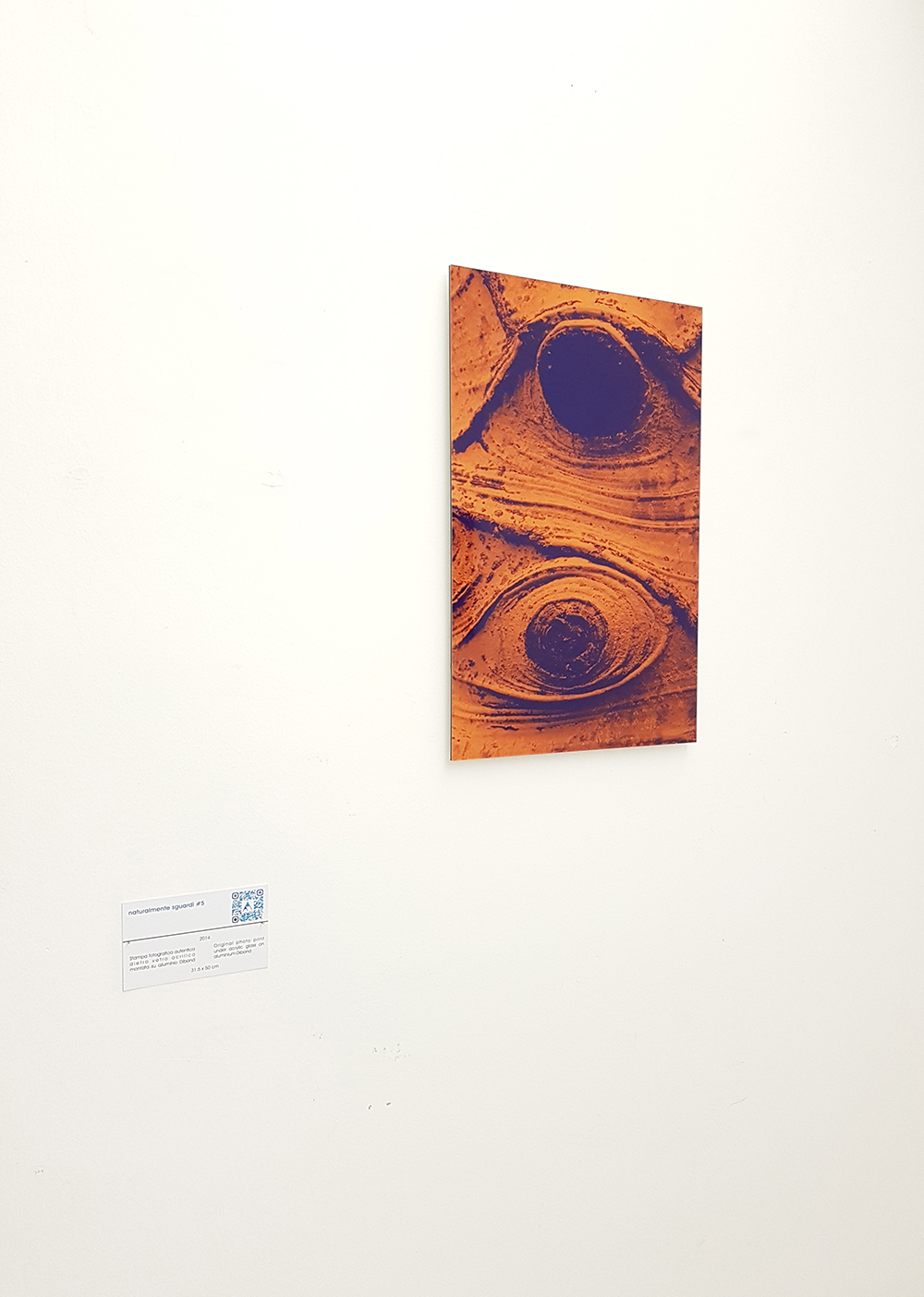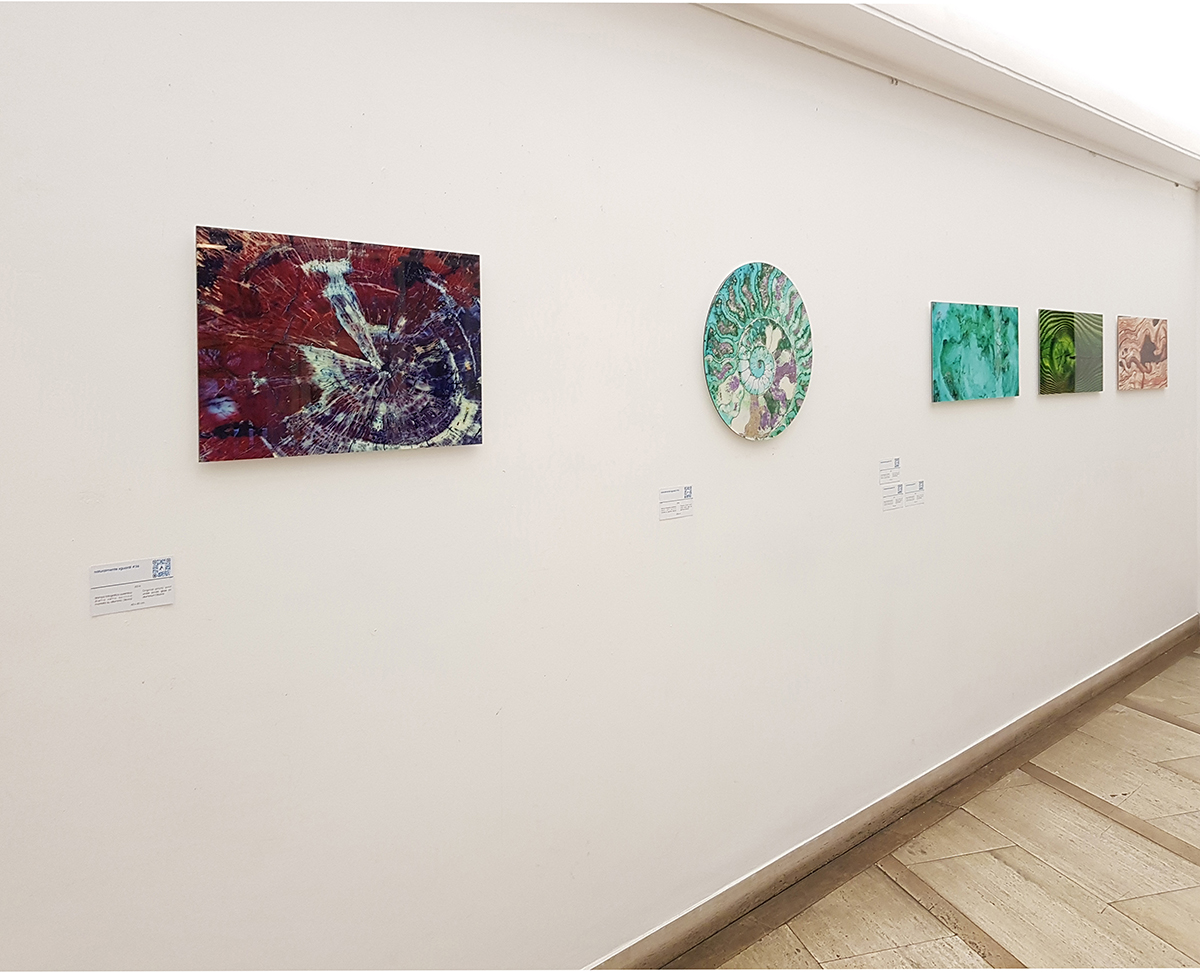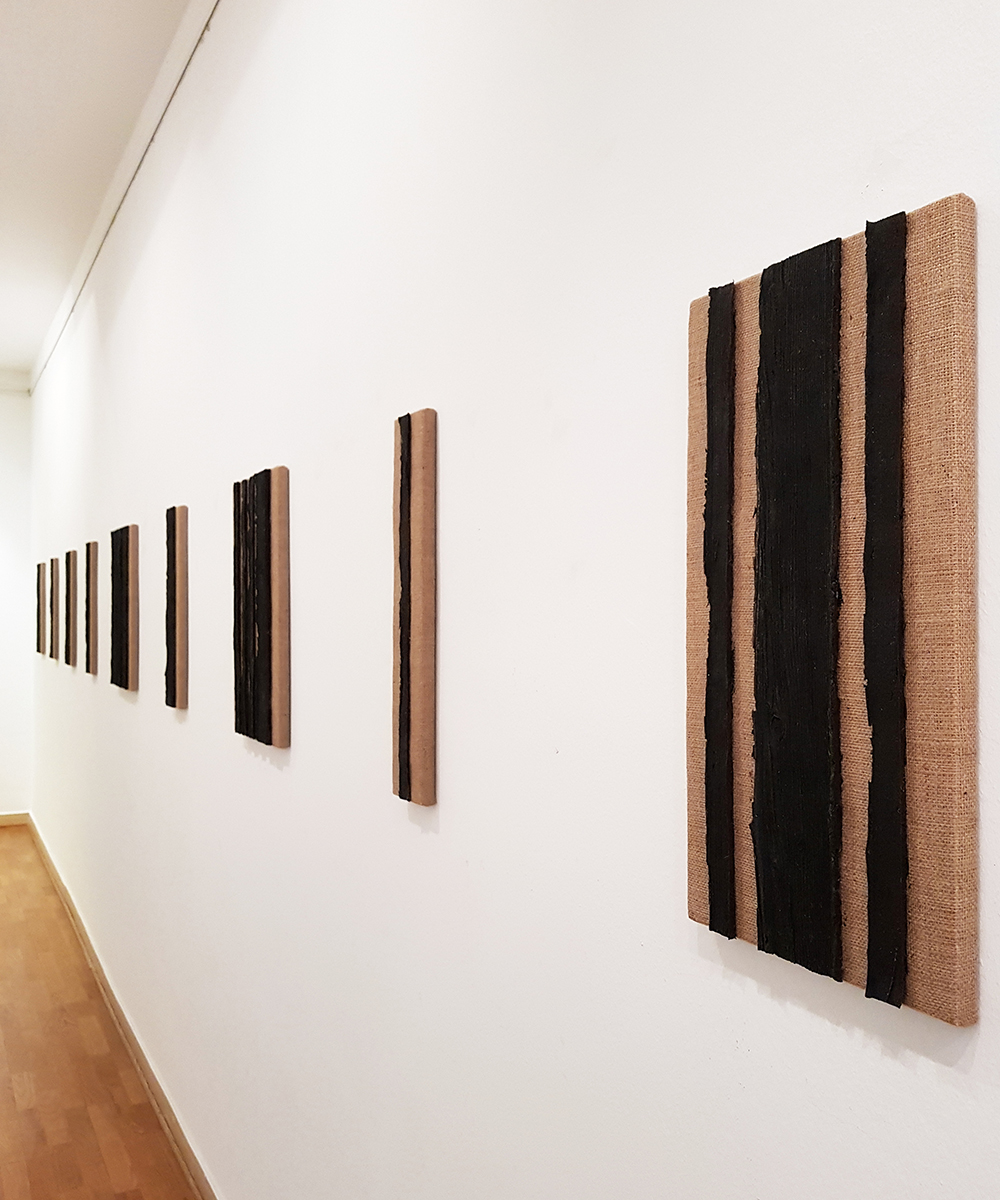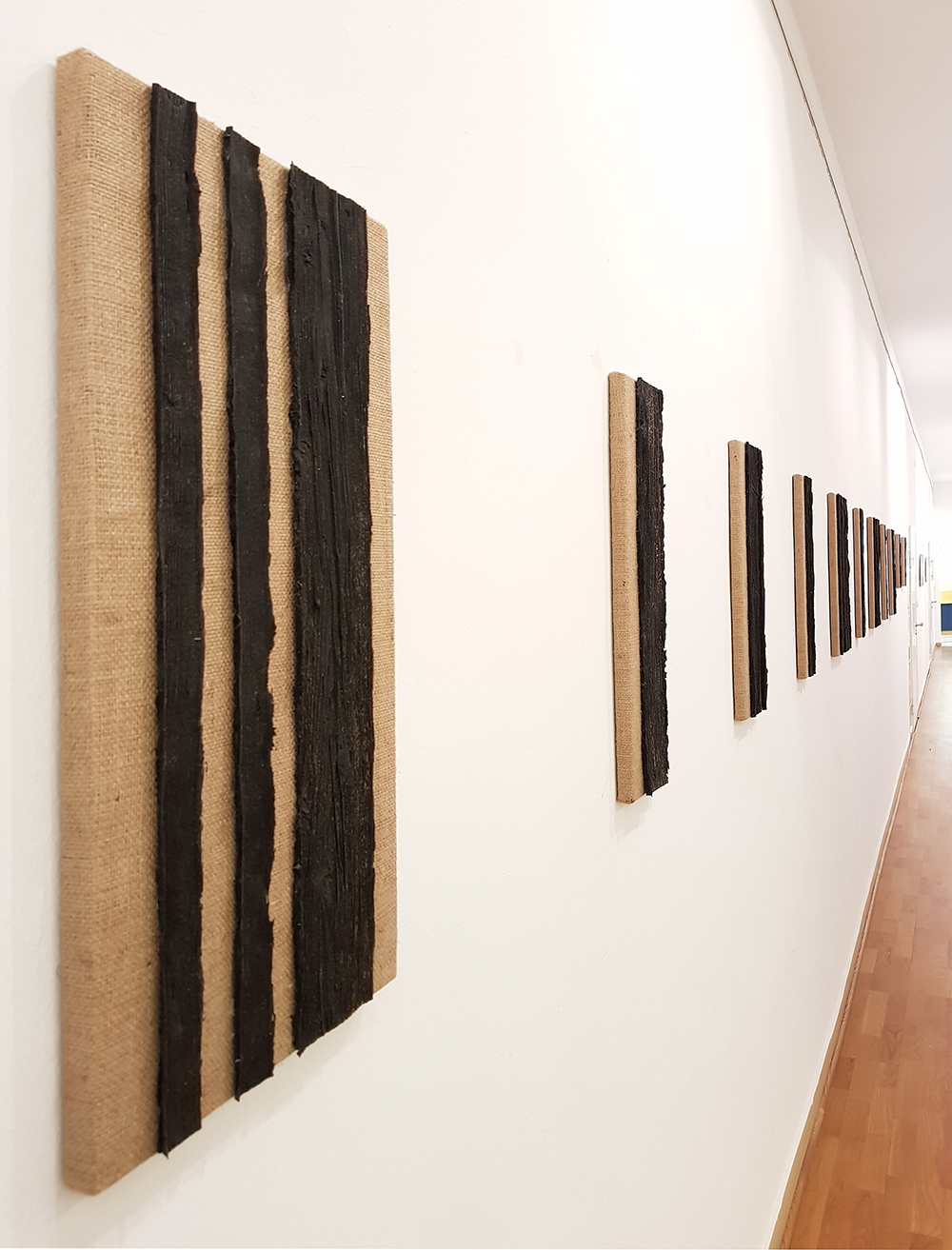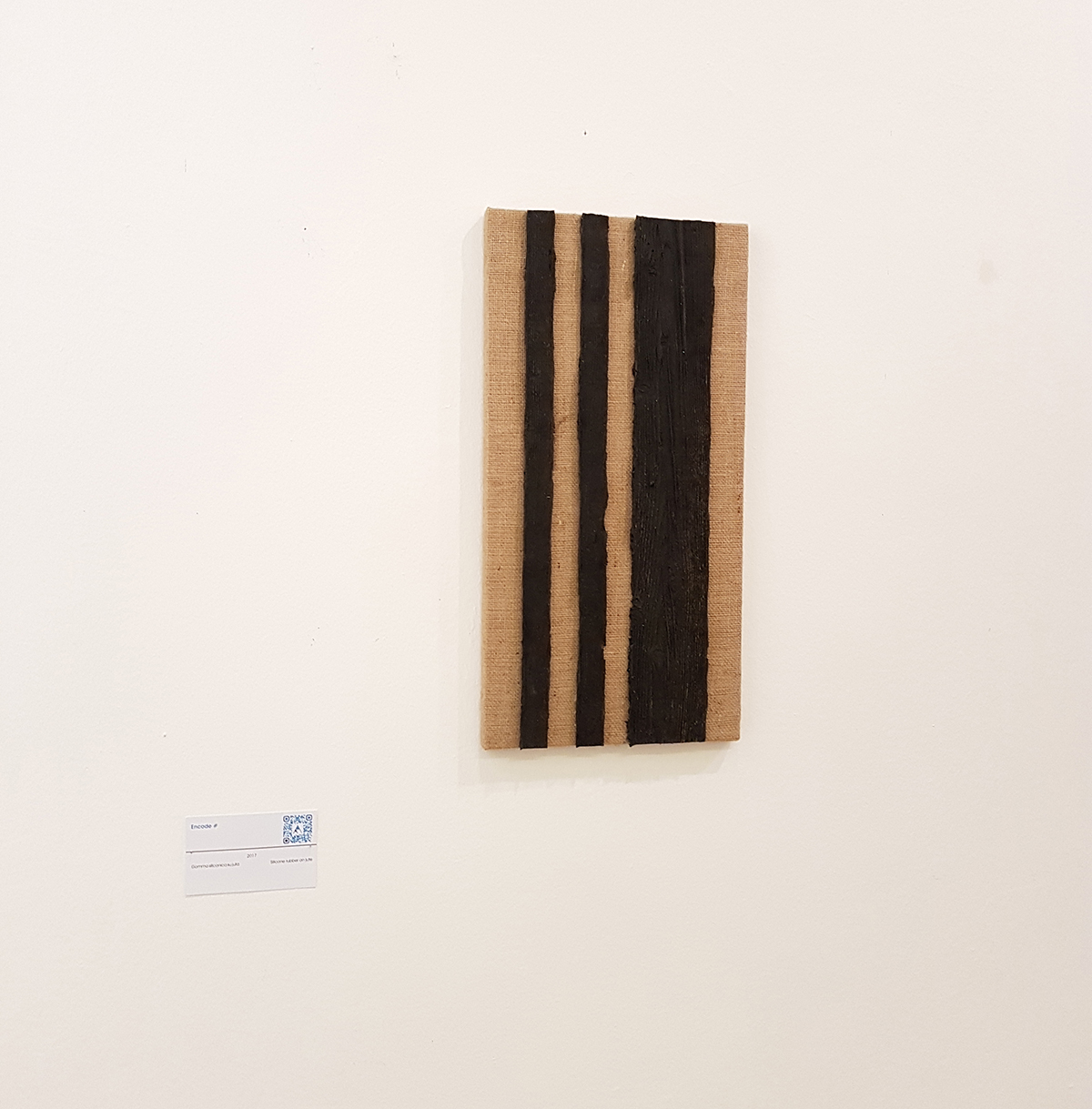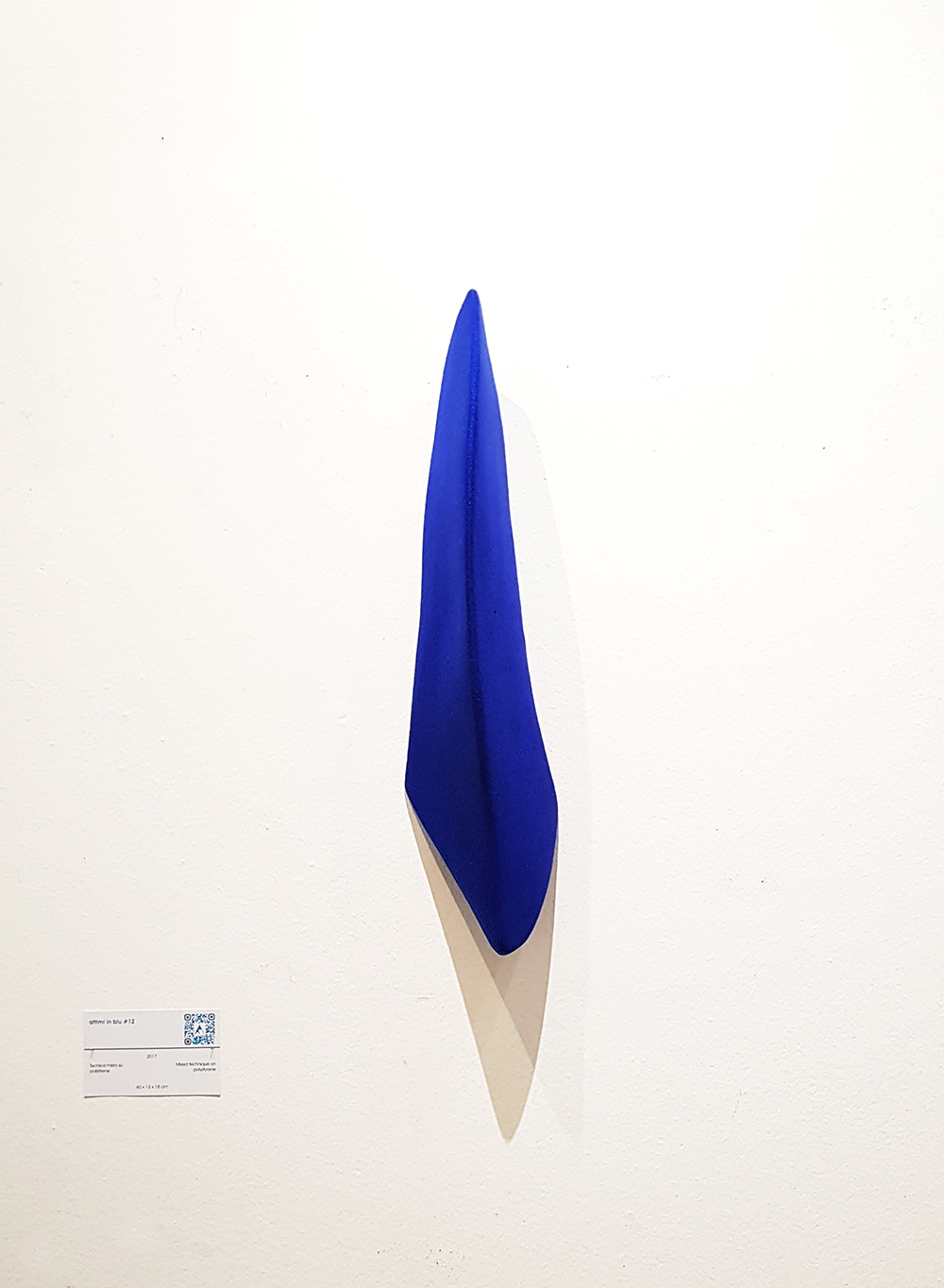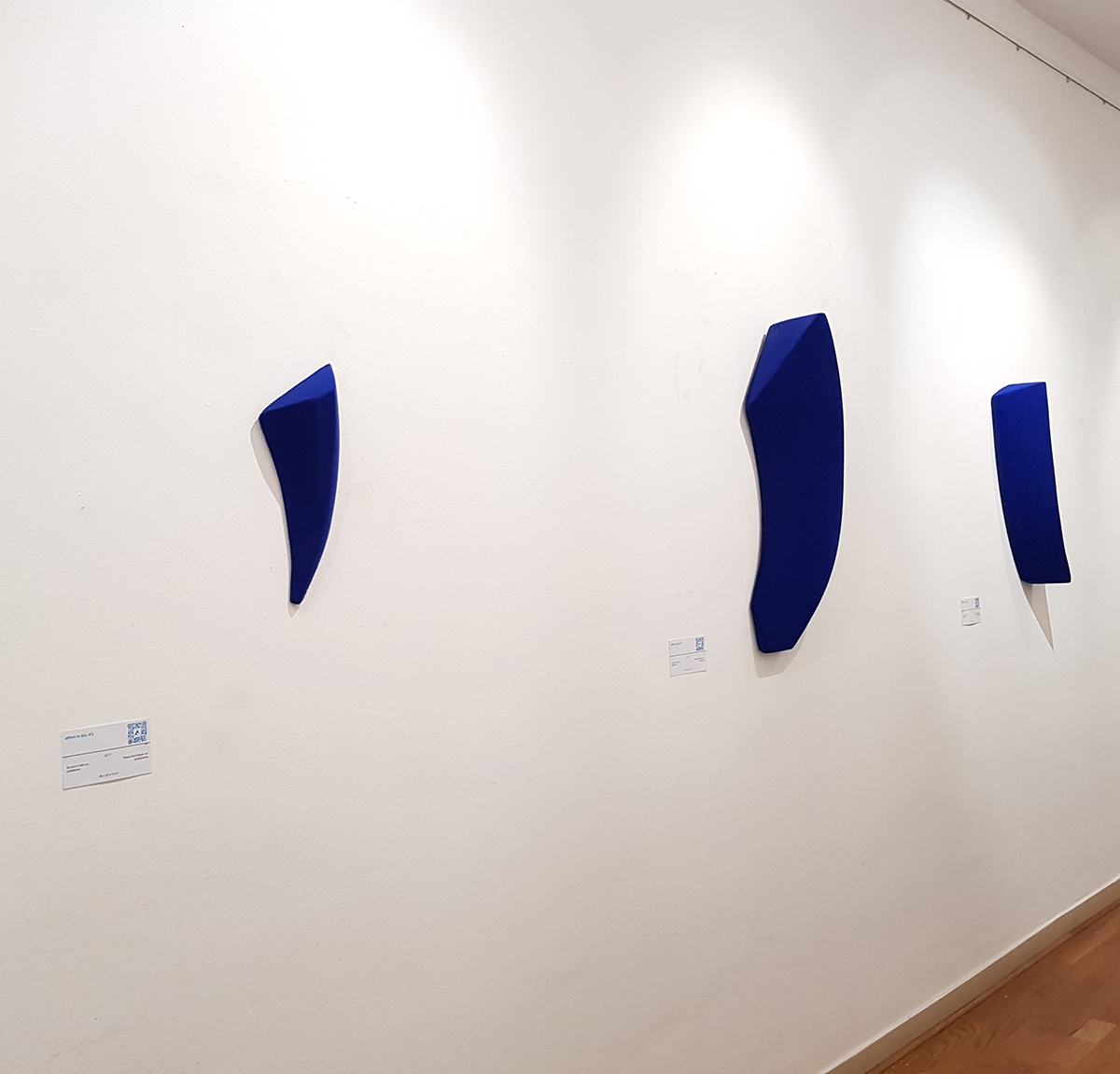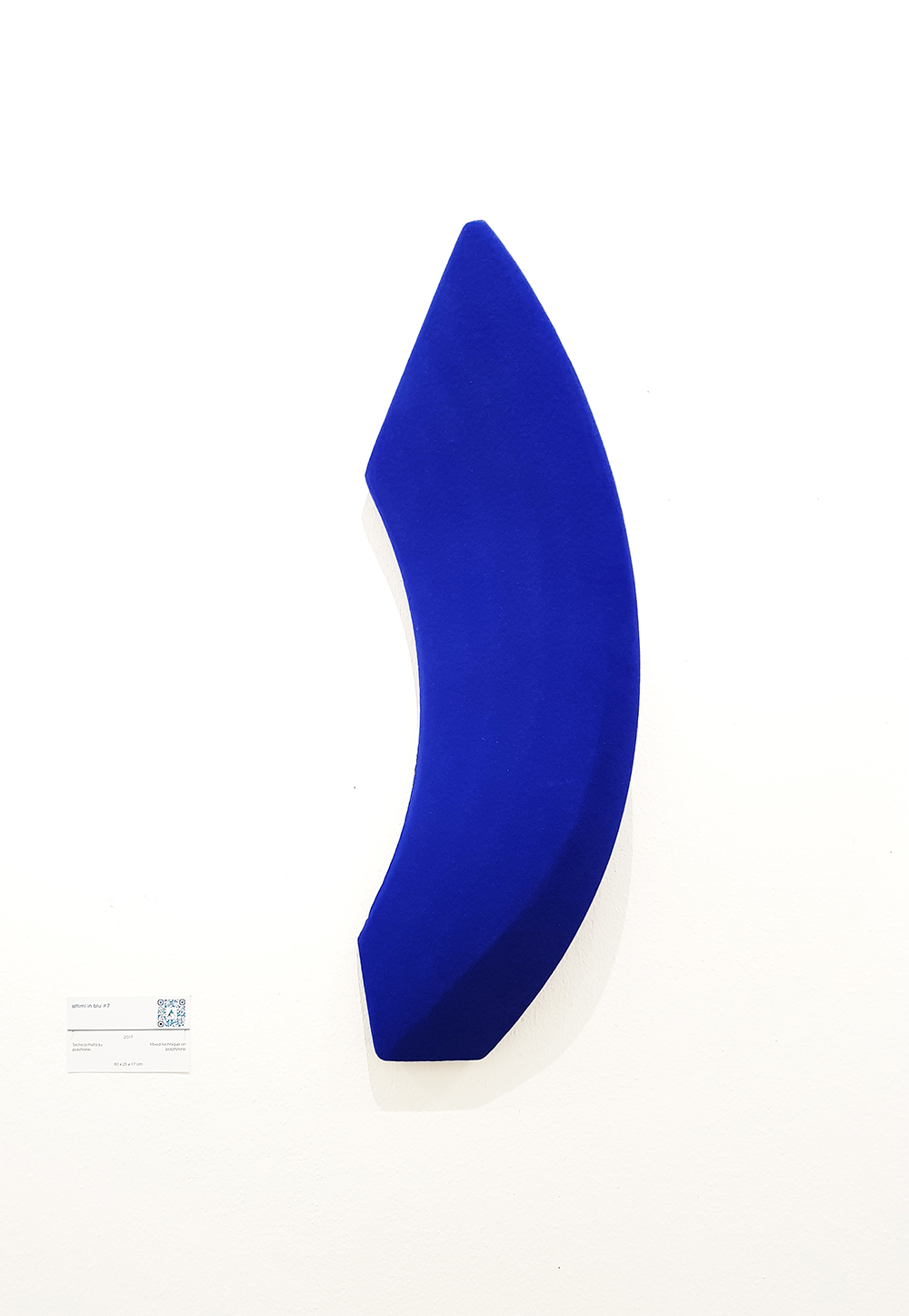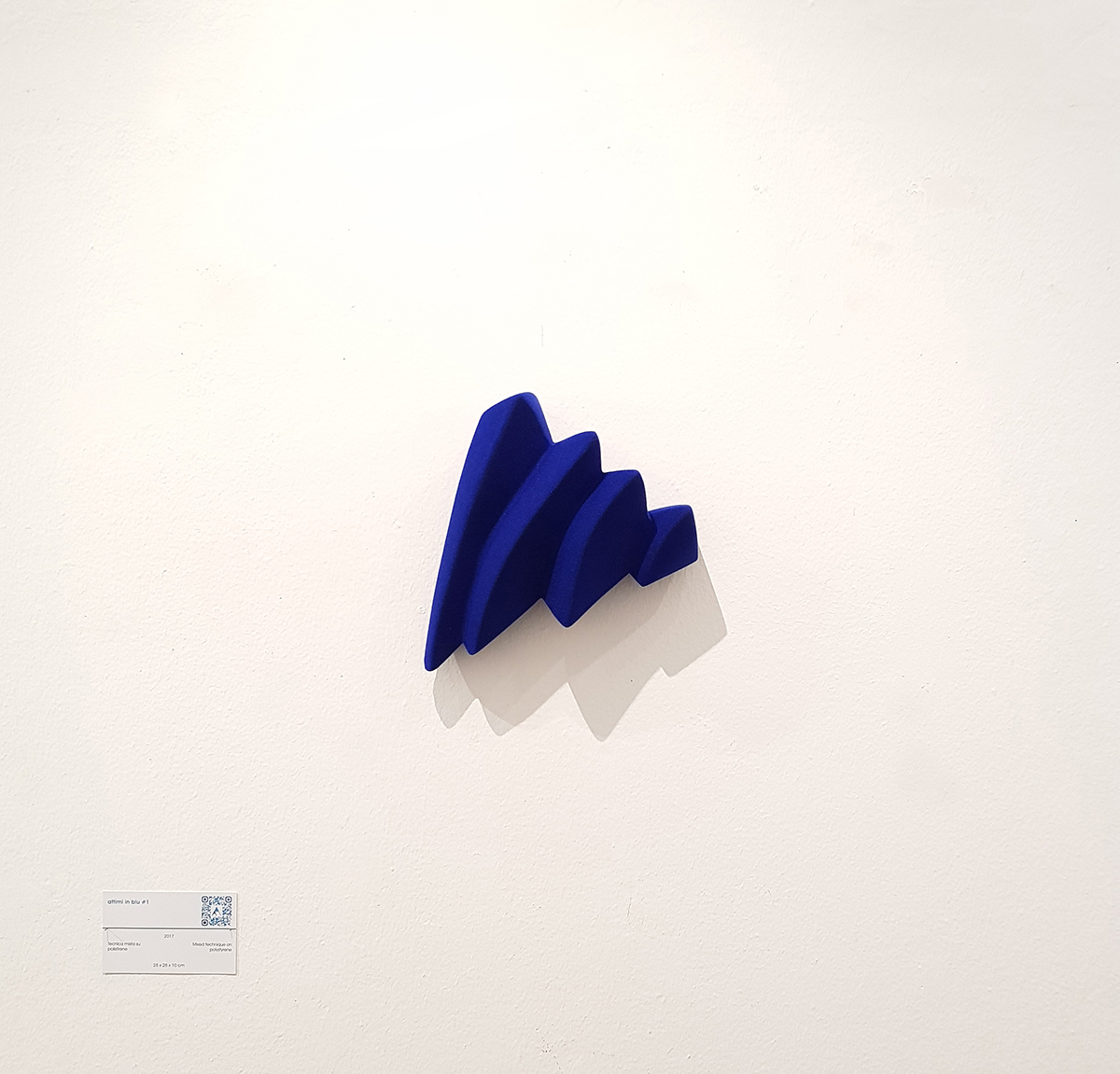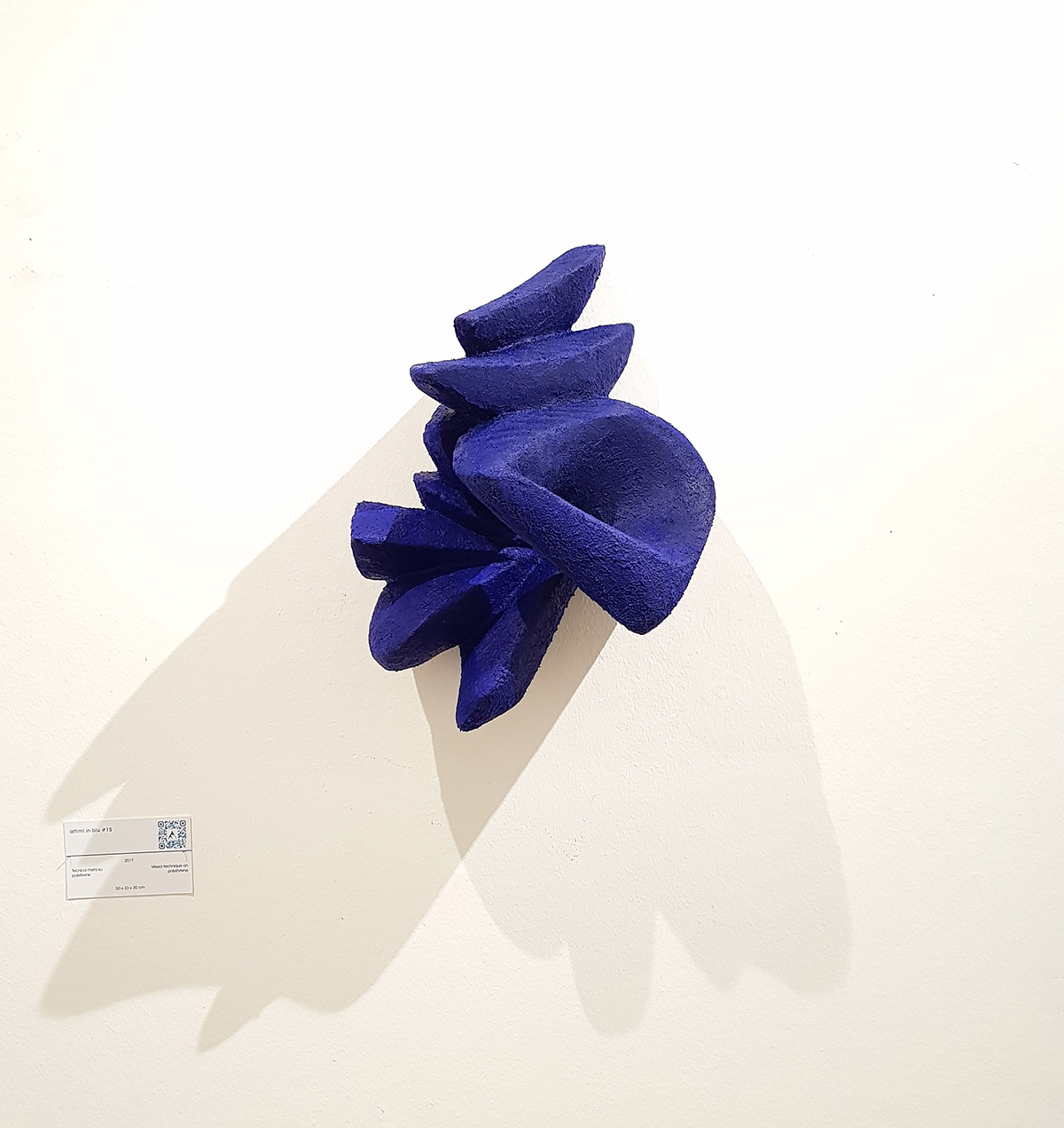Evocation of painting and plastic body
Notes for Ambrosino
Massimo Bignardi
As I suggested in the foreword of the catalogue of the recent exhibition held in Cortina d’Ampezzo, a certain kind of stylistic restlessness is the emerging trait of Antonio Ambrosino’s creative experiences carried out in this last decade. Let’s make it clear that I am not referring to the tools and ways by which the artist approaches the vital force of his unconscious, but to the foundation that supports his need to build up a dialogue with his existential identity.
Paraphrasing Calvino’s quote on literature, we can say that for Ambrosino the artistic experience is first of all abstraction and formalization. To be more precise: his process of contact with the world – what we commonly call reality – is performed through the filter of abstraction generally tending to uncover the vitality of the sign that in the painting dimension – images tied to a ‘space’ -belongs to the visual perception. Hence, his constant reference to images loaded with an analogism close to the ready-made – paintings ready for use-, I mean, to those images the artist observes in his frequent and continuous researches implemented by vision.
Evoking painting
The series of photographic prints framed on Dibond foil entitled Naturalmente sguardi produced in the last six years, basically since 2011, asserts itself as a very process of a consciously achieved abstraction where the reasons of a sign that closes upon itself in a circle are accompanied by an imaginary prefiguration of a natural ‘eye’ – with its multiple vision ranges – that sees, observes, or better the artist is watched by. They are cross-sectional looks interweaving on trajectories set in place by the emotionality enclosed in the least fraction of time until the reflection captures reality, the very realism of these images. In addition, they declare the attention to the processes of observation, that is to the ability the eye owns to reveal the ‘looks’ nature addresses to the realm of existence, allowing us to enter the processes of change, the metamorphoses. Starting from the painting level – as the works that enliven the cycle Naturalmente sguardi are basically conceived as densely coloured painting – Ambrosino seems to have embraced Ferdinando Scianna’s thought concerning processes and gestures made by a photographer ‘to choose a piece of world, a piece of experience and decide the moment when to record its track.” A choice founded on the assumption that “the brain processes dealing with images are determinant to the development of one’s own conscience and identity.”
But the above mentioned Ambrosino’s stylistic restlessness, along with the prospect of a process of abstraction, records an undeniable inclination to formalization: a fact revealed in his three-dimensional experiences when he dialogues with the matter, controlling it or, better, bending it to the feeling of manipulation. Namely, the capability to handle the processes of ‘shaping’ Antonio has carried with himself as a recognisable distinctive mark since the beginning of this century when he was a student of mine at the Accademia di Belle Arti – Fine Arts Academy- of Naples. The three cycles of works on show follow different narrative times: from Frammenti di tempo, started in 2003 and still in the artist’s interest today , to Attimi, a cycle of sculptures that recalls the formal track of Frammenti in particular as concerns the handling of the sign. In turn, they recall the dynamic path adopted by Amerigo Tot for the bas-relief tiles with ‘spiral fans’ (1959) visible, among others, on the false ceiling of Sala della Vittoria at the Farnesina Palace in Rome and in Rilievi, a sculpture for the headquarters of the Ministry of Agriculture in Rome, too. Ambrosino’s cycles are closed by Metamorphoseon, conditioned shapes, works recently produced in a variety of dimensions through which the artist turns his attention to the realm of matter and shape. Works that in his own words lead him “towards a conscious awareness of art, and spur him to imagine rigorous geometries that are the sign (that is the testimony) of my existence.” The first and second series are wooden, resin and clay sculptures produced between 2003 and 2016, through which the artist watches attentively his living environment, the surrounding space, catching their features, transformations and the urgency that takes him forward into that intriguing and complex network of relationships that from the particular flows into the universal.
The datum that encompasses these three moments signalling the young artist’s (from the Neapolitan area) interest in sculpture is the idea supporting the project of ‘shaping’. Ambrosino embraces, though updating, the perspectives, the value the Neapolitan concretist-abstractist artists gave to this word at the beginning of the Fifties. “Shaping”, can be read in the manifesto-like text appeared in the January of 1954, “is a moral engagement of participation in the reality, expresses the conscience of being in reality, is acting.” First with Fragments, then with Metamorphoseon Ambrosino’s sculpture is an exercise about acting performed as an experience of ‘being’ in his own time. Taking over again what declared by Calvino in the interview given to Madeleine Santschi in 1967, we can affirm that Ambrosino presses to establish a relationship between reality and the signs by which we represent it. This is the meeting point around which his dynamic style turns thus distinguishing, even in their complexity, the works on show here.
Milieu and plastic body
Of the relationship between signs, milieu and body – that is the mental reflection on the environmental dimension in which our being is placed – has given testimony the massive installation ‘In that time too many lions will have the heart of the donkey‘ realized in the space of the project ‘Vesica’ for the Fürstliche Gartenfest at the Scloss Fasanerie of Fulda, Germany, in 2016 upon invitation by Luigi Izzo’s report, director of the Italian Institute of Culture in Cologne at the time. It is a site specific (ephemeral and temporal) intervention strongly focused on the symbolic where the magic-ritual ‘figure’ of the rosary (but also of the Muslim tasbeeh) becomes the element that structures the whole space in which the artist has worked using 59 tyres with rims, resins, plastic foam, long and multilayer pipes and other material. ‘The project – Ambrosino wrote to me during its conception when we were engaged with the catalogue for the above mentioned exhibition in Cortina d’Ampezzo – has been conceived following an attentive reflection about my being Italian and suggested by the primal meaning of Vesica, symbol of Jesus Christ. I can’t hide I have been influenced by the words pronounced by the Blessed Pope John Paul II in a speech he held in Fulda, Germany, in 1980. To a group of Catholics asking him the reason why the third secret of Fatima was not published in1960, yet he responded “it could be sufficient for Christians to know the following: if there is a message in which it is written that the oceans will flood entire parts of the Earth, and all of a sudden millions of people will die, it is not really worth spreading such a message”, and showing the rosary he concluded “ this is the remedy against this harm. Pray, pray, and trust in the Mother of God”.Reflections on the ‘figure’ of the rosary taken as key element of the installation characterized by a clip-charm generated from a lion’s mane set at the crossing of the arms and recalling a prophecy of the mystic Teresa Neumann, who anticipated for those days to come “at that time, too many lions will have a donkey’s heart”, a sentence which has become the title of my work.’
Undoubtedly the symbolic system from which the artist derives the idea of the object-shape of the massive installation is the one in which he was raised and educated. It is well known that in the Neapolitan area and surroundings the object-symbol develops a particular function both in its religious and magic, apotropaic sphere. Antonio has attempted to divide the level of the physical from the social reality. If on the one hand he insists on the mobile form running along the paths among the flower beds organising and ticking the ‘pauses’ of the twenty ten-grain sections of the rosary, that is of the twenty ‘Mysteries’ according to John Paul II, and closing the circle with the lion’s mane effigy charm, on the other he turns to the nature symbolized by the garden. A place where man can find again the spiritual dimension of nature, a place for spirit and thought. About the symbolic object Marc Augé affirms that “it is unique, though it possesses, joins and concentrates the two dimensions the language of the observer is obliged to distinguish.”
Ambrosino combines the form in its three-dimensional and earthly dimension with the experience of the look compelled into the zooming of reality, a look of pure abstraction to lead the fantasy of the spectators towards the new limits of their imagination into the realm of spirituality.


